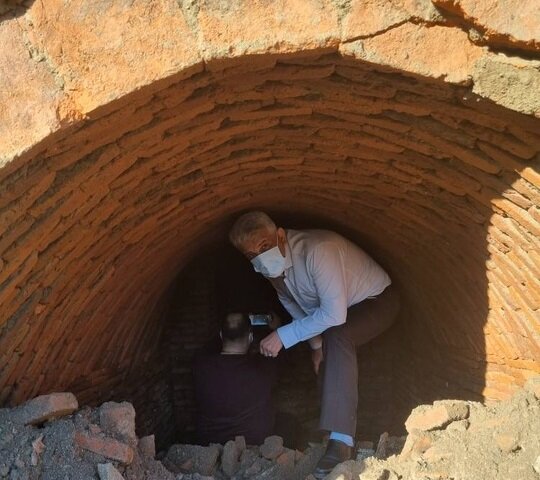Centuries-old graves discovered accidentally in northern Iran

TEHRAN – Some centuries-old graves have recently been discovered in the historical core of Rasht, the capital of Gilan province.
The graves embedded beneath a vaulted structure were accidentally unearthed by workers during a construction operation Gilan province’s tourism chief said on Sunday, CHTN reported.
“During excavation operations in the historical fabric of Rasht under the supervision of the personnel of the Cultural Heritage Protection Unit, a vaulted structure was unearthed, leading to an immediate halt in the operation for further investigation,” Vali Jahani said.
“The structure appears to be in the form of a vaulted dome, and upon closer inspection, a noticeable domed space is revealed,” Jahani explained.
The official said that upon examining the interior of the structure and considering the contents of the graves, some of the bones appear to be charred.
“The presence of ashes and charcoal inside one of these crypts indicates that these graves belong to individuals who succumbed to diseases such as the plague, smallpox, or other incurable illnesses mentioned in historical texts,” he said.
Jahani continued that documents found in the vicinity suggest that a rare disease had spread throughout the city, and after the death of individuals, in order to prevent the disease from spreading to others, human skeletons along with their personal belongings were placed inside the graves.
“The entrance to the graves was completely sealed to the extent that access to the interior of the graves became impossible.”
“With the necessary permits from the Research Institute of Cultural Heritage and Tourism, we hope to provide answers to the uncertainties and questions raised regarding this rare event,” he added.
The official said construction activities in the specified area have been halted until the matter is clarified.
The Gilan region was within the sphere of influence of the successive Achaemenian, Seleucid, Parthian, and Sasanian empires that ruled Iran until the 7th century CE. The subsequent Arab conquest of Iran led to the rise of many local dynasties, and Gilan acquired an independent status that continued until 1567.
Gilan is known for its tourist attractions and warm-hearted and hospitable people. The people of Gilan from different ethnic groups, including Gilak, Talesh, and Tat, have come together and formed a very rich and diverse culture and customs.
The touristic province offers plenty of activities for tourists. Hiking and trekking in the mountains, birdwatching in the lagoons, camping near the waterfalls and rivers, and sightseeing in the beautiful natural scenery are all popular activities for visitors.
AFM
